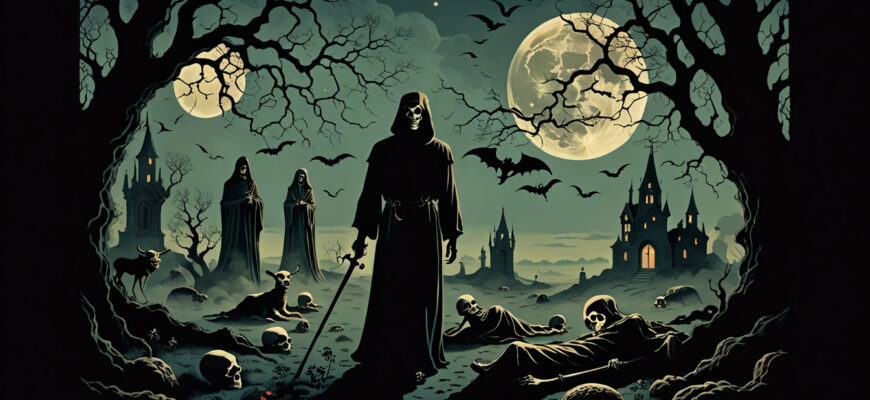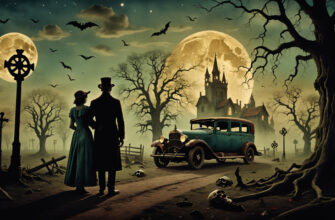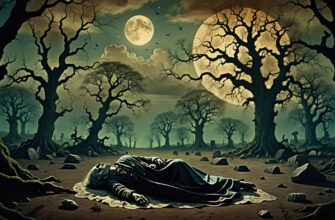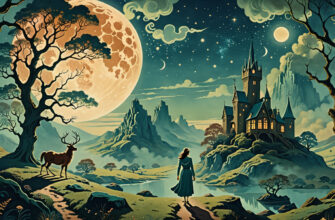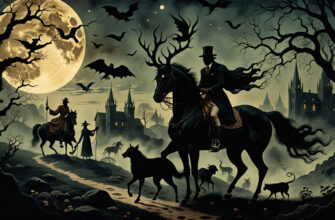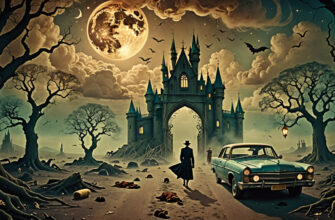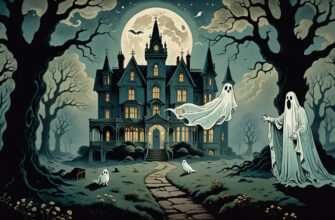Dreams about death can throw us into a swirl of heavy emotions—fear, confusion, sometimes a chill that lingers after waking. It’s easy to wonder, “Is this a sign? Should I be worried?” Yet, for most people, death in dreams doesn’t foretell literal endings but instead points to something deeply internal: endings, transformations, and shifts in identity. It is a language our subconscious uses to process grief, anxiety, or the unknown terrain of change. These nighttime visions often feel dense and unsettling, but they hold more layered meaning than pure terror or bad omens.
- Understanding Dreams Of Death: More Than A Literal Omen
- Embracing A Queer, Feminist Lens On Death Dreams
- Astrological Context: Pluto And Saturn Transits As Cosmic Mirrors In Death Dreams
- Common Death Dream Motifs and Their Emotional Roots
- Cultural Meanings and Rituals for Integrating Death Dreams
- Inviting Readers to Lean into Endings and Rebirth
Understanding Dreams Of Death: More Than A Literal Omen
When death shows up in dreams, the atmosphere usually feels heavy—there’s a weight in the chest, a knot of fear or sorrow—but it doesn’t often mean someone is about to die. Rather, death operates symbolically. It speaks to the closing of a chapter, the shedding of an old self, or a transformation in progress. Think about that feeling when you end a long chapter of your life—whether a relationship, a career, or a mindset—and the uncertainty about what comes next. Dreams of death capture that exact emotional blur.
Psychologically, these dreams show up when an ending or transition needs attention. Whether conscious or not, the mind points to these imagery as part of its work to release outdated habits, beliefs, or fears. They give space to the “death” of something – patterns, ways of coping, or even identities – so that something new can emerge. This kind of dreaming becomes its own ritual of rebirth.
The emotions beneath these night scenes are often tied to grief or unease about change. Sometimes it’s mourning something lost that hasn’t been fully processed, like an old hurt or a goodbye left unsaid. Other times, it’s the anxiety of stepping into the unknown or shifting into a new version of oneself. Even identity transitions—like coming out, changing gender expressions, or evolving mental health—can stir this kind of dream because they inherently involve leaving behind parts of who we used to be.
Looking through a cultural and archetypal lens, death dreams carry rich symbolism beyond the individual. Many traditions recognize death as a gateway—an archetype of transformation and renewal rather than finality. The Grim Reaper, the phoenix rising from ashes, the cyclical patterns of nature all remind us that death in dreams often channels these universal truths more than personal tragedy. This collective imagery taps into shared human experiences around life’s inevitable flux.
What if the dream of death isn’t something to fear but an invitation to reflect? Instead of seeing it as tragedy, it could be seen as a turning point within—the moment when the soul signals readiness to let go, to shed, and to step beyond old limitations. These dreams are often messengers, whispering about internal shifts that need recognition and courage. They ask us to lean into discomfort and trust the process of what’s quietly ending inside, so renewal can quietly take shape.
Embracing A Queer, Feminist Lens On Death Dreams
Reframing death dreams through queer and feminist perspectives shifts the story entirely. Instead of grim portents, they become profound acts of shadow work—the process of uncovering, facing, and integrating the parts of ourselves usually hidden or shamed. In this frame, death and decay aren’t ends but thresholds to healing and reclaiming power from what seemed lost or broken.
Imagine a dream where something dies. It can feel messy or painful at first, but queer and feminist reading highlights this moment as one ripe for personal storytelling and emotional honesty. Owning those stories, even the painful or complex ones, opens space for liberation from oppressive narratives about bodies, identities, and power. Ending is not punishment but a necessary step toward freedom and wholeness.
The way gender, identity, and social context color these dreams matters. A trans person might dream of death in ways that echo societal erasures or rebirth into an authentic self. A queer person might experience these dreams as wrestles with internalized stigma and the catharsis of breaking free. The feelings inside these dreams—fear, relief, release—mirror broader social realities that shape how individuals experience transformation.
This lens also challenges how society handles death as taboo. It pushes against the silence and fear around endings, inviting more conversations and rituals that honor complexity without shame. By making room for death dreams in queer and feminist healing, these experiences become acts of resistance—a way to say, “My ending matters, and so does my renewal.”
Astrological Context: Pluto And Saturn Transits As Cosmic Mirrors In Death Dreams
| Planet | Symbolic Meaning | Role In Death Dreams |
|---|---|---|
| Pluto | Transformation, Underworld, Rebirth | Strips away the old; raw overhaul triggering deep subconscious themes |
| Saturn | Boundaries, Time, Karma, Endings | Signals limits, life lessons, and closures stirring reflective dreaming |
When Pluto or Saturn touch sensitive points in a birth chart, death dreams often intensify. Scorpio’s ruler Pluto dives deep into regeneration and shadow, shaking loose what no longer serves. Saturn, the taskmaster, calls us to face reality and accept contracts nearing their close, sometimes in pretty sobering ways. Together, they map out the cosmic weather report for internal endings.
This astrological timing can feel like the universe holding a mirror, reflecting inner psychological cycles back to us through dream imagery. Transits activating the eighth house, the realm of death, rebirth, and shared power, often trigger these themes to surface as vivid dreams. Rather than fatalistic prophecy, astrology offers a guide: a way to track when the psyche might be working overtime on what needs release and renewal.
- Ask yourself: Where in your chart is death and rebirth showing up?
- Which planets or houses feel stirred by current transits?
- How might the timing of your dreams connect to these cosmic cycles?
This perspective invites curiosity instead of fear. Dreams of death during powerful transits become messages from the cosmos that endings are part of a bigger growth story. You were born for this cycle of surrender and renewal—your dreams are a sacred map for that journey.
Common Death Dream Motifs and Their Emotional Roots
Ever find yourself waking from a dream where you’re falling endlessly, watching someone die, or maybe being chased by some shadowy figure that feels like death itself? These images can leave your heart racing, but they’re often less about actual endings and more about what’s going on inside your emotional world.
Falling in dreams usually taps into feelings of losing control or anxiety about where life is headed. Dying, whether it’s you, a loved one, or a stranger, often signals a deep emotional shift—a readiness to let go of old habits, identities, or painful memories weighing down the soul. When death shows up as a figure chasing you, it might be your psyche’s way of confronting unresolved fears or feelings you’ve been avoiding.
These dream scenarios frequently represent more than literal death. They act as symbolic gateways inviting you to release past trauma, outdated parts of your identity, or worries about loss and separation. Consider the dream of witnessing death: rather than a passive act, it can point to a distancing from emotional numbness or a sense of watching transformation happening from afar.
Death dreams often mirror cycles of grief—whether personal or collective. If you’re navigating a breakup, the loss of a job, or even meaning-making in difficult social times, your night visions might be playing out those feelings. When change feels incomplete during waking hours, the body and mind seem to process the emotional unpacking at night, using death imagery as a metaphor for transformation.
Some death dreams carry nuanced messages that don’t fit the usual scripts. For example, dreaming of a child’s death might signal your psyche’s push toward maturity, an invitation to leave a younger version of yourself behind. Or seeing a dead relative might be less about mortality and more about ancestral guidance or unresolved feelings carried across generations.
Take a dream where you’re turning into a skeleton—it’s more about shedding surface layers than an ominous forecast. These often signal readiness to meet the raw parts of yourself and move past superficial fears. Another example: recurring dreams of losing teeth alongside death motifs could point to anxieties around vulnerability and power.
In all, death dreams function as emotional beacons. They urge attention to what’s ending inside so you can move gently but boldly toward what wants to be born. Understanding and honoring their messages helps rewrite endings into beginnings instead of places to get stuck.
Cultural Meanings and Rituals for Integrating Death Dreams
Death isn’t just a personal event; it ripples through culture as a metaphor for renewal and cyclical transformation. Many traditions embrace death as part of life’s flow—think of Día de los Muertos honoring ancestors in vibrant celebration or Tibetan Buddhism’s intricate rituals reminding practitioners of impermanence and rebirth.
These cultural frameworks teach us how to honor endings with reverence rather than fear, turning death dreams into opportunities for healing and growth. Simple rituals can help bring this integration into everyday life:
- Journaling: Pouring the dream onto paper helps articulate what needs release and what seeds might be planted next.
- Creating a dream altar: Gathering meaningful objects, candles, or stones linked to your dreams invites a sacred pause for reflection.
- Meditation: Sitting with the feelings stirred up by death dreams builds curiosity and compassion instead of avoidance.
- Art-making: Painting or drawing images from the dream can unlock unconscious wisdom and make transformation visible.
Shadow work, inspired by these journeys toward inner darkness, invites you to greet repressed parts of yourself revealed in death dreams. Queer and feminist ritual practices particularly emphasize autonomy—honoring your power to choose how you engage with endings and what kind of rebirth you claim.
Rather than whipping up dread, inviting curiosity about death dreams opens the door to trust this process:
- Notice recurring dream themes and their emotional tones.
- Set gentle intentions before sleep to meet endings with kindness.
- Lean on community or chosen family to hold space when the work feels heavy.
This kind of ritualized care teaches the body and mind that endings can shelter new beginnings, grounding you in a cycle that includes both grief and hope.
Inviting Readers to Lean into Endings and Rebirth
What is dying in your dream, and what part of your waking life is ready for release? Reflect on these questions when death shows up in sleep—it’s not about doom but invitation to transformation.
Letting go is an act of reclaiming power in the cycles of life. Death dreams push you to surrender the old and step into who you’re becoming with boldness. They ask you to embrace the unknown with trust, knowing every ending carries the seeds of rebirth.
Remember, you were born for this rhythm—the cosmic cycle of surrender and renewal. These dreams speak the language of deep change, calling you to show up fully as your life shifts.
